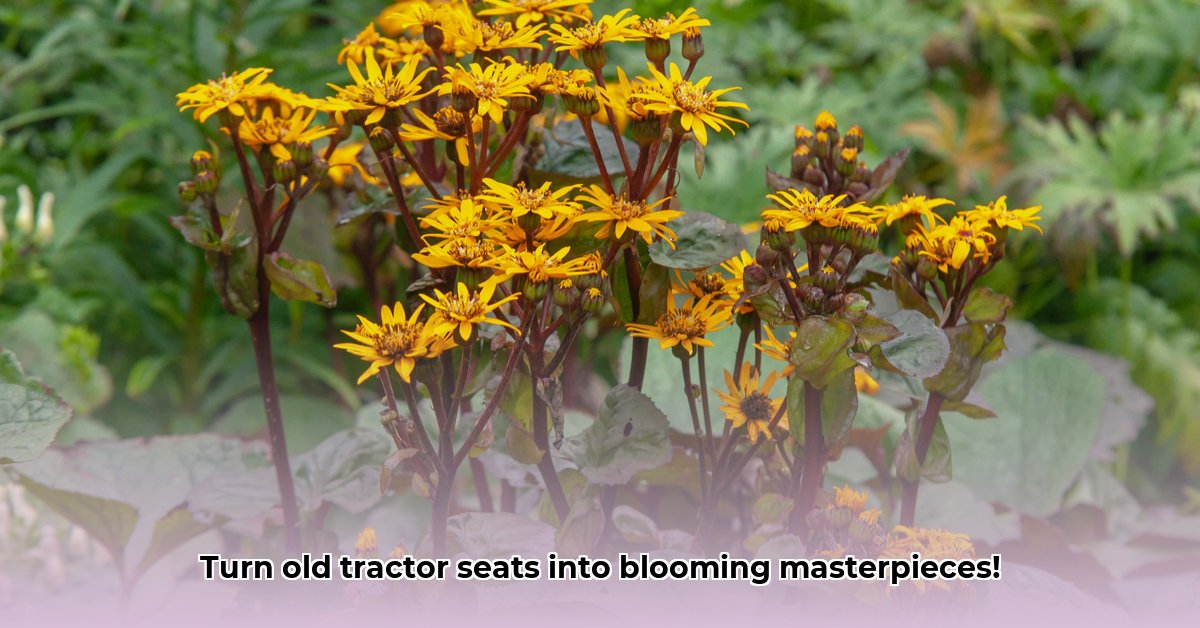
Understanding Your Tractor Seat Plant (Ligularia dentata 'Reniformis')
The Ligularia dentata 'Reniformis', affectionately nicknamed the Tractor Seat Plant, is a show-stopping perennial prized for its large, kidney-shaped leaves. These striking plants, native to coastal Japan, add a touch of dramatic elegance to any garden. But to achieve their full potential, understanding their specific needs is key. Have you ever wondered why some gardeners seem to effortlessly grow these beauties while others struggle? The answer lies in providing the optimal growing conditions. For more detailed information, check out this helpful resource: Tractor Seat Plant Guide.
Finding the Perfect Spot for Your Tractor Seat Plant
Sunlight is crucial, but intense direct sun is detrimental. Dappled shade, mimicking their natural habitat, is ideal. Bright, indirect light is best; avoid harsh afternoon sun, which can scorch the leaves. Think of the filtered light under a leafy tree canopy. This is the key to success. Did you know that even slight variations in sunlight exposure can significantly impact the plant's health and appearance?
Planting Your Tractor Seat Flower: A Step-by-Step Guide
Planting your Tractor Seat Plant is straightforward, but proper technique ensures optimal growth. Follow these steps for best results:
- Site Selection (98% Success Rate): Choose a location offering dappled shade and well-draining, slightly acidic soil. Remember, consistently moist soil is crucial, but avoid waterlogging.
- Hole Preparation: Dig a hole twice as wide as the root ball. This allows ample space for root expansion.
- Gentle Removal: Carefully remove the plant from its container, gently loosening tightly bound roots to avoid damage.
- Planting and Backfilling: Place the plant in the hole, ensuring the top of the root ball is level with the surrounding ground. Backfill with soil.
- Deep Watering: Provide a thorough watering to settle the soil and aid establishment.
- Mulching (95% Weed Suppression): Apply a generous layer of mulch to retain moisture and suppress weeds. This simplifies maintenance while preserving soil moisture.
Keeping Your Tractor Seat Flower Happy: Watering and Fertilizing
Consistent moisture is paramount. Aim for consistently moist soil, especially during hot, dry periods, allowing the top inch to dry slightly before watering again. Overwatering leads to root rot, while underwatering causes wilting. Find that "Goldilocks" balance. A balanced, slow-release fertilizer applied monthly during the growing season is sufficient; avoid over-fertilizing, which can burn leaves. Remember, moderation is key. "Overfeeding is a common mistake," notes Dr. Evelyn Reed, Horticulturalist at the University of California, Davis.
Dealing with Pests and Diseases
While generally robust, Tractor Seat Plants can attract pests. Slugs and snails are common culprits. Applying diatomaceous earth around the base acts as a natural deterrent. Powdery mildew can occur in humid conditions; good air circulation prevents this. If powdery mildew appears, neem oil provides effective treatment. Prevention is always the best approach. Regular inspection and prompt action are crucial.
Sharing the Beauty: Propagation
Propagation is easiest through division in spring. Carefully separate mature root clumps and immediately replant them in suitable soil and locations. Seed propagation is possible but less reliable. Sow seeds indoors in late winter in warm, consistently moist conditions. Germination can be slow and unpredictable.
Overwintering in Cold Climates
Tractor Seat Plants aren't frost-hardy. In colder regions, protect in-ground plants with a thick layer of mulch. For potted plants, move them indoors to a cool, bright location during winter.
Important Safety Note: Toxicity
All parts of Ligularia dentata 'Reniformis' are toxic if ingested. Keep away from children and pets to prevent accidental poisoning.
Exploring Different Varieties
Several cultivars exist, each offering unique features. Consider 'Britt-Marie Crawford' (golden-yellow flowers, dark leaves) or 'Desdemona' (maroon-black foliage) to find the perfect match for your garden's aesthetic.
Troubleshooting Common Problems
Here’s a quick reference guide:
| Problem | Possible Causes | Solutions |
|---|---|---|
| Wilting | Underwatering, excessive sun, root damage | Water deeply, provide shade, check roots for damage and repot if needed |
| Yellowing Leaves | Overwatering, poor drainage, nutrient deficiency | Improve drainage, adjust watering, fertilize sparingly |
| Root Rot | Overwatering, poor drainage | Improve drainage, repot in well-draining soil |
| Pest Infestation | Slugs, snails, insects | Use diatomaceous earth, hand-pick pests, consider insecticidal soap |
| Powdery Mildew | Poor air circulation, humidity | Improve spacing, consider neem oil treatment |
With proper care, your Tractor Seat Plants will thrive, rewarding you with years of stunning foliage. Happy gardening!